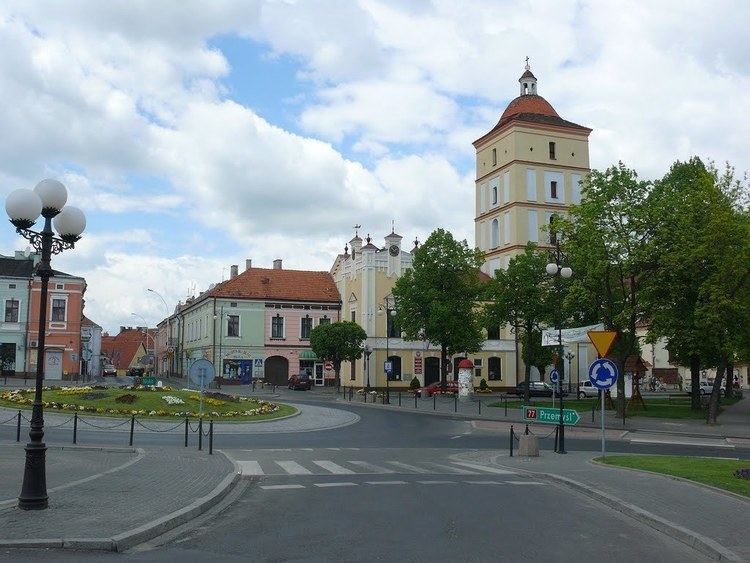Country Poland Gmina Leżajsk (urban gmina) Postal code 37-300 Area 20.29 km² Voivodeship Podkarpackie Voivodeship | County Leżajsk County Time zone CET (UTC+1) Car plates RLE Population 14,252 (2014) Local time Thursday 8:33 PM | |
 | ||
Weather 3°C, Wind W at 11 km/h, 75% Humidity Points of interest Muzeum Ziemi Leżajskiej, Muzeum Prowincji Ojców Be, Floryda, Rezerwat przyrody Las Klasz | ||
Le ajsk
Leżajsk [ˈlɛʐai̯sk] (full name The Free Royal City of Leżajsk, Polish: Wolne Królewskie Miasto Leżajsk; Ukrainian: Лежайськ, Lezhais’k; Yiddish: ליזשענסק-Lizhensk) is a town in southeastern Poland with 14,507 inhabitants. It has been situated in the Subcarpathian Voivodship since 1999 and is the capital of Leżajsk County.
Contents
- Le ajsk
- Map of LeC5BCajsk Poland
- Le ajsk xvii ct pipe organ j s bach toccata and fugue in d minor bwv 565
- Historical Sites
- Notable people
- References
Map of Le%C5%BCajsk, Poland
Leżajsk is famed for its Bernadine basilica and monastery, built by the architect Antonio Pellacini. The basilica contains a highly regarded pipe organ from the second half of the 17th century and organ recitals take place there. It stands as one of Poland's official national Historic Monuments (Pomnik historii), as designated April 20, 2005, and tracked by the National Heritage Board of Poland.
Leżajsk is also home of the Leżajsk brewery. The Jewish cemetery in Leżajsk is a place of pilgrimage for Jews from all over the world, who come to visit the tomb of Elimelech, the great 18th century Hasidic Rebbe. The town is crossed by a forest creek ‘Jagoda’.
The development of Lezajsk was slow, due to numerous and devastating Tatar and Wallachian raids, which took place in 1498, 1500, 1509, 1519 and 1524. Following these raids, Polish kings granted several privileges to the looted town, and finally, on September 23, 1524 in Lwow, King Zygmunt Stary decided to move Lezajsk to a new location, which was easier to defend. The town was moved some 5 kilometers south-west, and its new name was Lezajsk Zygmuntowski. During the reign of Zygmunt August, Lezajsk prospered due to protection of its starosta, Krzysztof Szydlowiecki (Odrowaz coat of arms), who was Crown Chancellor. In 1608, Bernadine monks from nearby Przeworsk were brought to Lezajsk by Bishop of Przemyśl, Maciej Pstrokonski, and two years later, first brick church was built. In 1624 Lezajsk was looted and burned by Crimean Tatars, Swedish invasion of Poland (1655 - 1660) brought more destruction.
Following the first partition of Poland (1772), Lezajsk was annexed by the Habsburg Empire, and remained in Austrian Galicia until November 1918. In 1809, the town was captured by the Duchy of Warsaw, but soon afterwards, it was retaken by Austrians. In 1896-1900, a rail line connecting Lezajsk with Przeworsk and Rozwadow was completed. The town suffered during World War I, as Austro-Hungarian and Russian armies fought here in 1914 and 1915. Lezajsk was occupied by Russians between November 1914 and May 1915.
In the Second Polish Republic, Lezajsk belonged to Lwow Voivodeship. In July 1929, the town was visited by President Ignacy Moscicki. On September 13, 1939, Lezajsk was captured by the Wehrmacht. During World War II, the Home Army was very active in the area, and on May 28, 1943, Germans shot 43 residents of the town. Lezajsk was captured by the Home Army on July 27, 1944.
